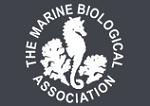APHOTOMARINE
An educational resource dedicated mainly to the photography
and diversity of marine life that can be found in coastal waters
and intertidal areas of Great Britain and Ireland by David Fenwick.

Scalpellum scalpellum
- lateral view 1
Scalpellid barnacle
Scalpellum scalpellum
- growing on Cellaria sp. 1
Scalpellid barnacle
Scalpellum scalpellum
- growing on Cellaria sp. 2
Scalpellid barnacle
Scalpellum scalpellum
- with 0.1mm division rule 1
Scalpellid barnacle
Scalpellum scalpellum
- Cellaria sp. on crab pot 1
Juvenile specimen found growing on the bryozoan Cellaria, on a crab pot that appeared to have been recently caught in a trawl. Newlyn Marina, Newlyn, Cornwall. 23.08.15.
Scalpellid barnacle
Scalpellum scalpellum
- lateral view 2
Scalpellid barnacle
Scalpellum scalpellum
- lateral view 3
Above, one of four juvenile specimens that were found on a length of rope that had washed-up on a beach near Hayle, Cornwall, 05.03.16.
Scalpellid barnacle
Scalpellum scalpellum
- with Nemertesia antennina 1
Scalpellid barnacle
Scalpellum scalpellum
- with Nemertesia antennina 2
Scalpellid barnacle
Scalpellum scalpellum
- with Nemertesia antennina 3
Specimen above found on the hydroid Nemertesia antennina. The hydroid and barnacle was with other debris that was found in a box of Gurnard at Newlyn Fish Market, Newlyn, Cornwall, 23.01.17.
Scalpellid barnacle
Scalpellum scalpellum
- 2-3mm juvenile on hydroid 1
The 2-3mm juvenile specimen above was found attached to a hydroid that was in turn growing on a Common spider crab that was found on the lowershore in Newlyn Harbour, Newlyn, Cornwall, 28.01.17.
APHOTOMARINE supports open source data recording and sharing for the benefit of wildlife, recorders, research, science and education. The project recommends the following websites and works with the following bodies and organisations.
The Marine Biological Association or MBA, based in Plymouth, is one of the world’s longest-running societies dedicated to promoting research into our oceans and the life they support. Since 1884 the MBA has been providing a unified, clear, independent voice on behalf of the marine biological community.It has a growing membership in over 40 countries.
The National Biodiversity Network or NBN is a charity that supports open source data sharing and recording supporting conservation, science and education. "Why do recorders need open source?". Simply because it supports the core values of wildlife recording and the free use of records and data over a very wide network that includes partners like the Natural History Museum.
The taxonomy used here is based on that of the following database, which is also used by the MBA, NHM and the NBN.
The World Register of Marine Species or WoRMS.

